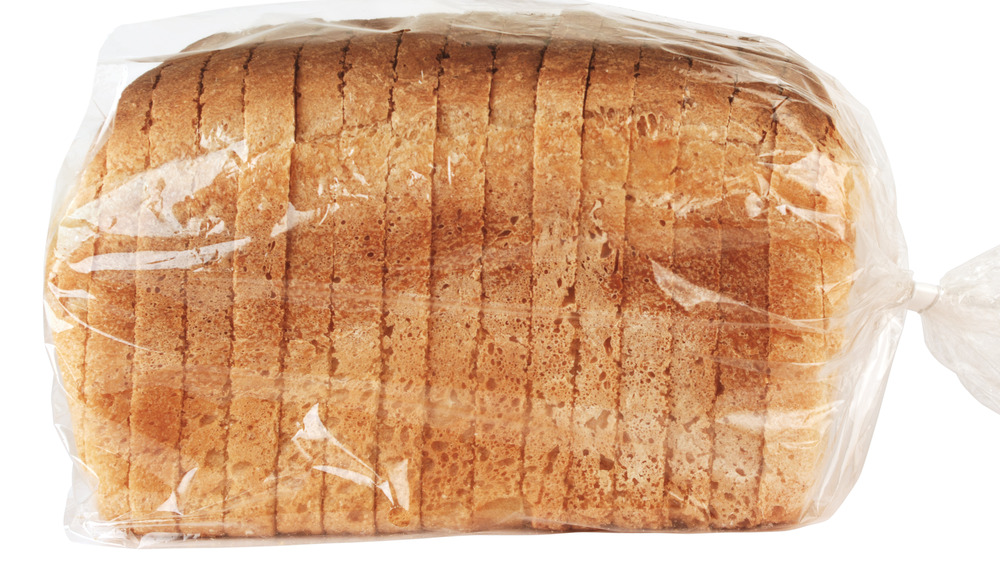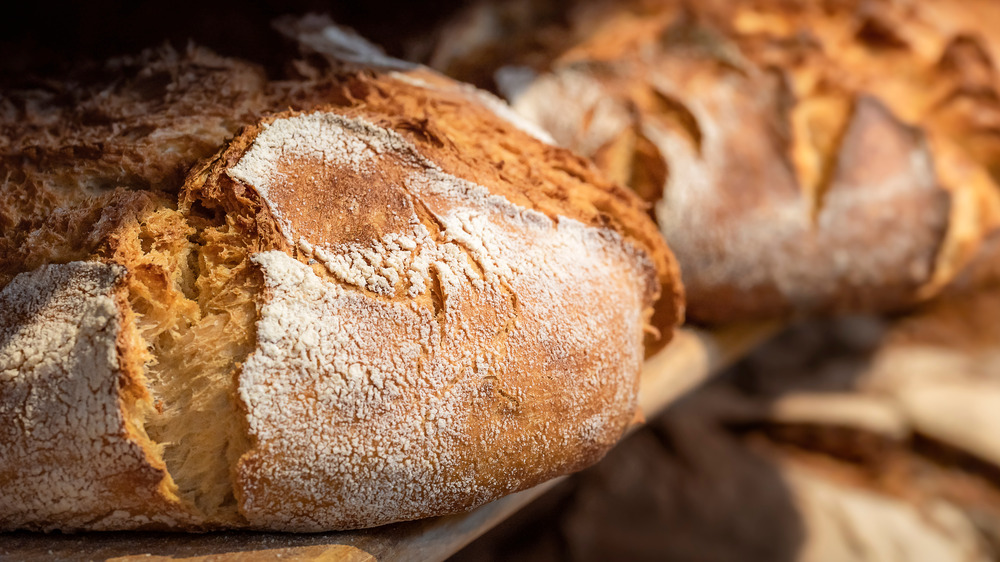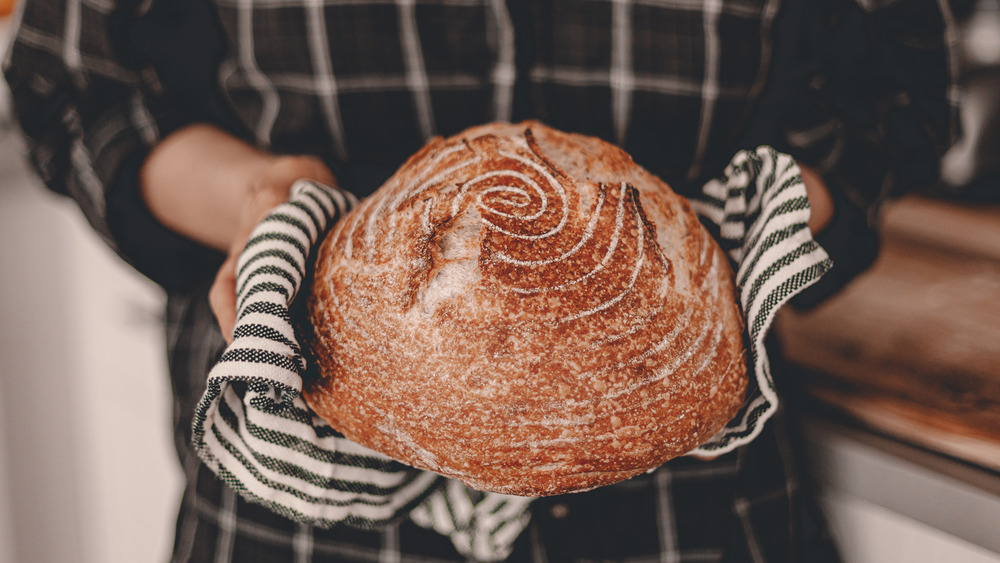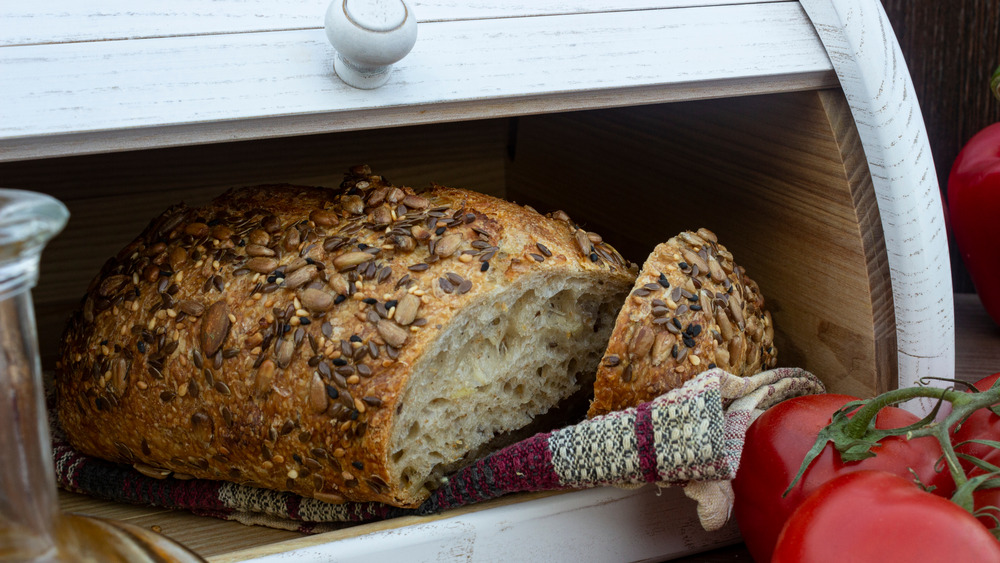You've Been Closing Bread Bags Wrong Your Entire Life
If you are tired of searching for the last twist-tie, this TikTok hack might be your kitchen savior. As reported by Taste of Home, it is time to start closing bread bags in a more efficient way. According to a video by TikTok user @goldilocks.bears.x, the easiest way to close a bread bag is to use the bag itself to seal it. After twisting the bag closed, simply fold the remaining plastic back over the loaf of bread. No other closures are needed. The video goes on to apply similar methods to chip bags and cereal bags.
This brilliant idea might have people cleaning out the kitchen drawer of all those chip clips, which could clear out a ton of extra space. But while this TikTok trend has received a ton of attention, the reality is that the idea isn't necessarily a new one. Life Hacker posted the idea back in 2012 and various other YouTube channels and bloggers, have also shared the concept of closing a bread bag or other food bags without a closure method. However, there are some other important ways to keep your bread fresh that isn't just about the way you seal off the bread bag.
Pros and cons of using paper or plastic to keep your bread fresh
In many homes, bread is a staple pantry food. From sandwiches to French Toast to even bread pudding, this carb-laden food is often a part of many meals, so it's important to keep it as fresh as possible. According to Food & Wine, there are a few components that help keep bread delicious and fluffy. The publication notes that a paper bag is better than a plastic one because plastic can deteriorate bread faster. Even if that TikTok bread bag closure hack works, it still might be better to use a paper bag.
But, that paper bag does have a downside, too. Southern Living discussed the differences between paper and plastic bags, noting that often artisan bread is sold in a paper bag. The reasoning is that a paper bag allows air to circulate, which keeps the crust crisp. However, at the same time, the air will cause the bread to lose its moisture and possibly go stale quicker. In a plastic bag, the moisture stays inside, but leads to crust being less crisp.
Bread storage is all about the location
Although it might sound like a conversation about real estate, keeping bread fresh is all about the location. Don't put a loaf on top of the toaster oven or refrigerator — a cool, dry area is best. As Insider shared, storing bread on top of a refrigerator is the worst option because the warm location will allow moisture to get trapped in the bag. Moisture can cause bread to mold and nobody wants that added ingredient on their sandwich.
While on top of the refrigerator isn't a viable option, inside the refrigerator isn't a great choice either. Good Housekeeping states that the refrigerator is the worst place for storing bread. Although that bread might seem like it lasts long than storing it on the counter, the "starch molecules in bread recrystallize very quickly at cool temperatures." That means your sandwich might not be as tasty on that refrigerated bread. So, if you can't put the bread in or on the refrigerator, what storage options are left?
Did grandma know the best method to store bread?
If stale bread leaves you in crumbles, it might be best to take some advice from grandma. As she often knows best, that bread box could be the solution to keeping bread fresher longer. A bread box is as functional as it is fashionable and allows air to circulate, which keeps the bread from getting moldy. The Spruce Eats suggests a variety of bread storage options that balance style and function. At the same time, the other bread storage ideas still apply. Putting a bread box on top of the refrigerator might keep countertops uncluttered, but it defeats the purpose of keeping bread fresher longer.
Whether the bread is homemade or store bought, the goal is to keep that first slice as tasty as the last piece. From bread bag closing hacks to storage locations, all the ingredients matter. James Beard once said, "good bread is the most fundamentally satisfying of all foods." So, isn't it important to keep that bread as fresh as possible?



